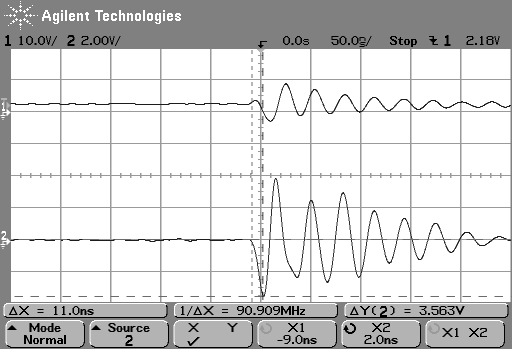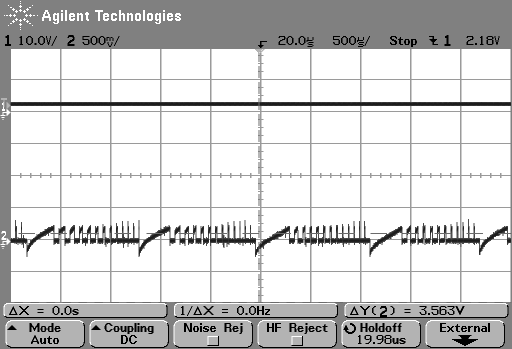Greetings!
I have a DRV8811 based design which resets sporadically, but only when the motor is running. Other than that, I can't seem to correlate the reset event with any other activity.
The design point for motor current is about 600ma. Vm is 24v. It is set for mixed decay. The motor is being full stepped. I put a scope and ground on one of the H-Bridge .33 ohm sense resistors. When the reset occurs, I see a negative voltage spike at the sense point which seems to equate to a -10A transient, of about 10 to 20 ns. With a 100MHz scope, that is the limit of my resolution. This current spike appears to be followed within ns by a noise spike on my 5V supply, the 3.3v supply, and the reset line.
The spike can happen anywhere in the motor step/pwm cycle.
I am looking for any advice in how to rule my DRV8811 implementation in or out as a culprit.
Gerry Belanger



